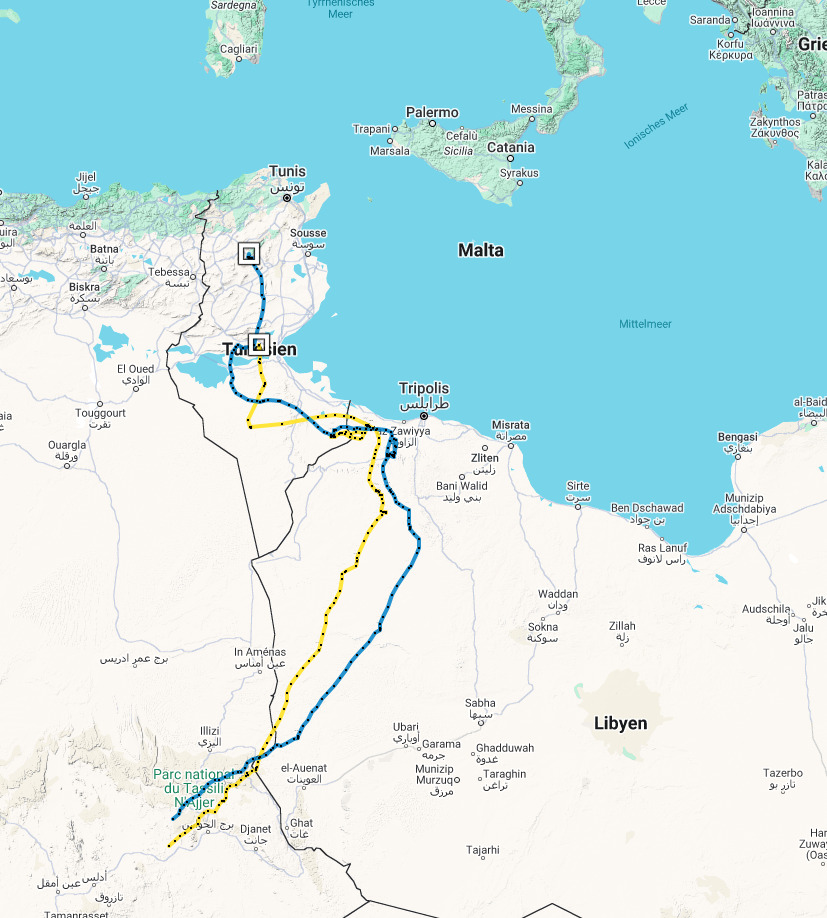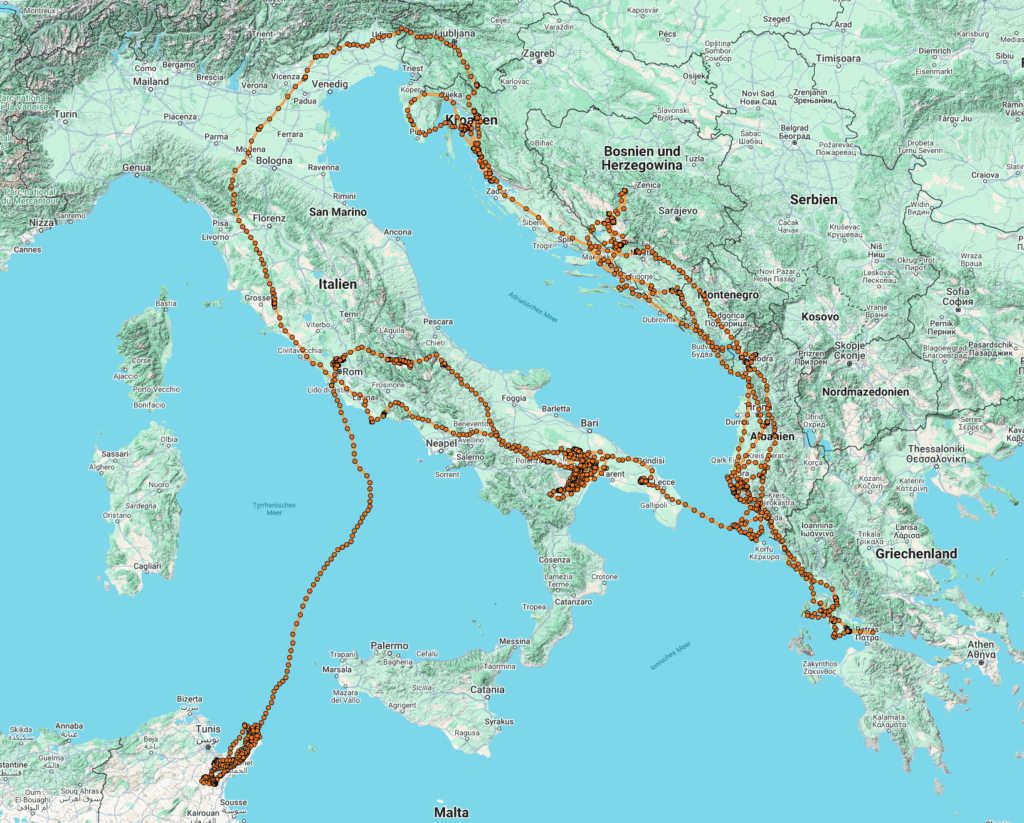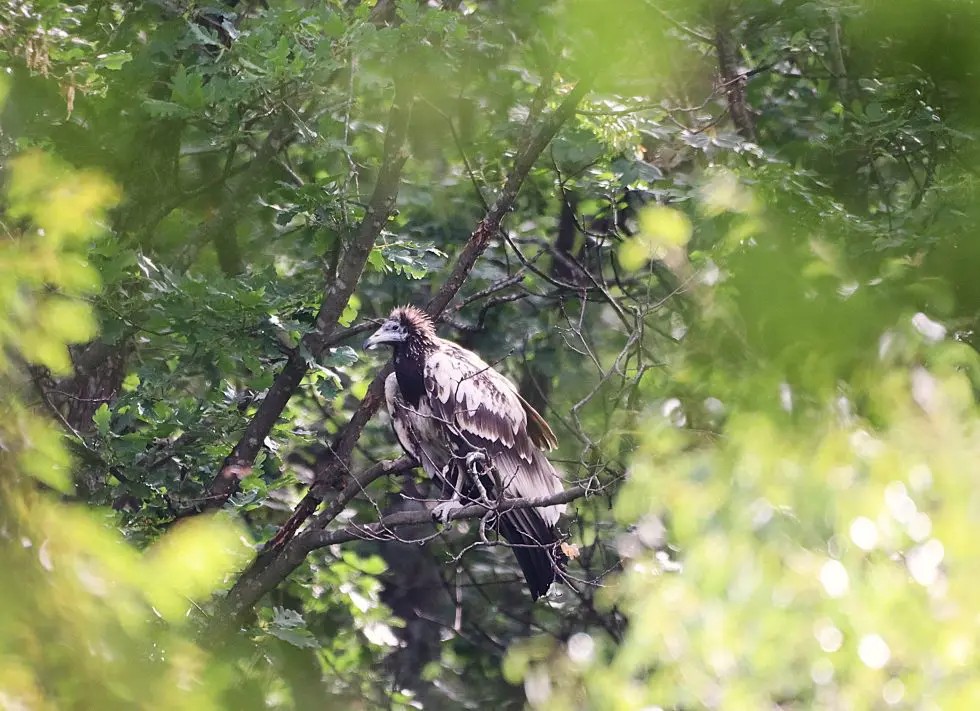After spending three years in Africa, the Egyptian Vulture Gabriel flies back to Italy where he was released in 2021 by the LIFE Egyptian Vulture project. In his long flight heading home, he covered more than 10,000 kilometres and crossed nine countries.

Gabriel is a four-year-old male Egyptian Vulture (Neophron percnopterus). He hatched in June 2021 at CERM Centro Rapaci Minacciati Association in Italy. In August 2021, he took his first flight in the northern part of the Murgia Materana Park, in southern Italy, together with four other Egyptian Vultures. His release was part of the now concluded LIFE Egyptian Vulture project (2017-2022). The project promoted the recovery and expansion of Egyptian Vultures in Italy and in the Canary Islands and contributed to mitigate the impact of the threats affecting the species.
Thanks to the GPS transmitter provided by the Vulture Conservation Foundation, several teams of scientists (VCF, ISPRA and CERM) monitored him over the years. A month after his first flight, Gabriel undertook his first autumn migration from Italy to Africa. He stayed in Sicily for a few days and then moved on to Tunisia, before reaching Algeria by the end of September 2021. He spent the next three years exploring the Sahel region of Africa, as young Egyptian vultures usually do.


The instinctive call of home
In mid-April 2025, Gabriel’s GPS signalled a change of direction. On April 16, he left Tunisia and reached Italy in 10 hours, flying 630 kilometres over the Mediterranean Sea. It followed an unusual route, likely because a strong wing pushed him west. In fact, most birds stop in Sicily before reaching the mainland. Flying this long over open waters is particularly dangerous: the bird could easily exhaust itself and fall into the sea. This flight alone showcases the incredible endurance of Egyptian Vultures. However, Gabriel amazed the monitoring team with a tour like no other.
After spending a few days close to his release site in Italy, he moved again, crossing the Ionian Sea towards Greece. In twelve days, from May 13 to May 25 he flew over six countries, following the mediterranean east coast: Greece, Albania, Montenegro, Bosnia and Herzegovina, Croatia and Slovenia. Coming back to Italy through the north, he then crossed the country, from North to South and from East, to West, to East again, circling back to the place his instinct calls home. In fact, around his fourth birthday at the beginning of June, he was flying again near his release site in northern part of the Murgia Materana Park. Just this year he travelled 10,700 kilometres, flying over nine countries including Algeria – where his journey started – Tunisia and Italy – where he is now.


[RIGHT] Gabriel’s movements from April 16 to June 10 2025
A glimpse into Egyptian Vulture conservation
La Egyptian Vultures (Neophron percnopterus) is the smallest and most threatened vulture species in Europe. Aside from its striking appearance, the species is well known for its ability to use tools and its migration habits. In fact, it is the only European species that migrates to Africa every autumn, and back to Europe in spring.
It is classified as globally endangered in the IUCN Red List of Threatened Species, and it currently declining in Europe. Indeed, in the last forty years, the species suffered a sharp decline due to lack of food, poaching and poisoning. There is only one large population left in the Iberian Peninsula (1500 breeding pairs), while the populations in France (around 90 breeding pairs and in the Balkans (30 pairs) are small. In Italy, the population plummeted from 70 to 10 pairs in a little over thirty years. For this reason, the CERM developed a captive-breeding project some decades ago, the same that hatched and released Gabriel in 2021.
The spark of a brighter future
Fortunately, in the last few years, we saw some encouraging signs across all Europe. Captive-bred Egyptian Vultures successfully paired and raised chicks in the wild in Bulgaria. Greece saw its first Egyptian Vulture chick in years near Meteora rock formation in Thessaly. And Italy celebrated two record events: a wild Egyptian Vulture pair successfully reproducing in Sardinia for the first time in the last few years, and the first captive-bred Egyptian Vulture to breed in the wild in Europe, reproduced in Basilicata in 2022.
The instinct guided Gabriel back home, in an area that has seen his first flight and hosted this species for centuries. His journey, together with the encouraging signs the species is showing across Europe, make us feel hopeful for the future. They reward the entire conservation community of the relentless efforts put in protecting the Egyptian Vultures and European ecosystems over the years. We will keep an eye on Gabriel and continue working to give him and other Egyptian vultures the chance to thrive in Europe and beyond.


